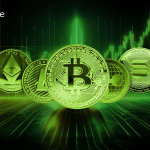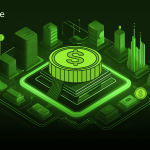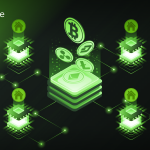Seracle Insights: Industry article on Web3 gaming
Introduction to Web3 Gaming
The gaming industry has come a long way since the days of Pong and Mario. With the introduction of the internet, online gaming became popular, and now the industry is on the brink of yet another major transition to Web3 gaming.
Web3 gaming is the next evolution of online gaming, and it promises to revolutionize the industry by introducing new levels of interactivity and immersion. But what exactly is Web3 gaming, and how does it differ from traditional online gaming?
At its core, Web3 gaming is built on blockchain technology, which enables players to truly own their in-game assets. where blockchain technology is seamlessly integrated into gameplay. It offers players unprecedented ownership of in-game assets, true digital scarcity, and a glimpse into the metaverse, a sprawling interconnected virtual universe. This technology ensures that these assets are secure and cannot be duplicated or counterfeited.
Market Size and Growth
Reports from DappRadar found that from 2021 to 2022, activity in Web3 gaming exploded by 2,000%. As of Q1 of 2023, the gaming sector accounted for a significant portion of the Web3 ecosystem (1). The gaming industry is expected to grow even more in the coming years.
Market Size
– The Web3 gaming market size is projected to be worth US$ 23,926.0 Million in 2023(2).
– The rapidly growing gaming space is projected to reach $260bn by 2025(3).
– There are 2.5bn gamers worldwide (3bn projected by 2023)(4).
– The average gamer plays 8 hours and 27 minutes per week(5).
Comparison with Traditional Gaming
– Web3 gaming differs from traditional gaming in that players can engage in decentralized gaming experiences, as games operate on the blockchain(6).
Market Projections
– The Web3 gaming market is likely to surpass US$ 133,228.2 Million by 2033 at a CAGR of(7).
– The global metaverse market is expected to expand at a CAGR of 47.6 percent, with a value of $1,527.55 billion by 2029(8)
– By 2026, 25% of people will spend an hour or more in the metaverse each day(9).
– Countries Most Interested in Web3 Gaming 2021 – 2023 includes countries like Saudi Arabia, UAE, Singapore, Nigeria, Philippines(10).
In conclusion, Web3 gaming is a new era of gaming that is revolutionising the industry by offering players the opportunity to own, trade, and earn from in-game assets. The industry is expected to grow in the coming years, and investors can benefit from the potential for high returns.
Elements of Web3 Gaming
Blockchain Integration
Blockchain technologies, led by Ethereum and Binance Smart Chain, underpin Web3 gaming. Smart contracts ensure trust and transparency in virtual economies, allowing gamers to truly own and trade digital assets within the game ecosystem.
NFTs (Non-Fungible Tokens)
Non-Fungible Tokens (NFTs) have become the hallmark of Web3 gaming, With games like “Axie Infinity” and “Star Atlas” leading the way.
Decentralized Finance (DeFi)
Decentralized Finance in Gaming The integration of DeFi mechanisms within Web3 games has opened up new avenues for players to earn and trade cryptocurrencies. Gamers can now stake assets, participate in liquidity pools, and access DeFi services, blurring the lines between gaming and finance.
Gaming Metaverse
The gaming metaverse is the ultimate vision of Web3 gaming. Projects like “Decentraland” and “Sandbox” are already attracting millions of users, promising interconnected virtual worlds where players can seamlessly hop from one game to another.
Challenges and potential risks with Web3 Gaming
1. Technical complexity: Web3 gaming involves the use of blockchain technology, smart contracts, and decentralized platforms, which can be complex and difficult to understand for some users. This can lead to a lack of adoption and user awareness.
2. Scalability: As Web3 gaming grows in popularity, scalability becomes a significant challenge. The current blockchain infrastructure may not be able to handle the increasing demand, leading to slow transaction times and high fees.
4. Regulation and legal challenges: Web3 gaming operates on a decentralized platform, which can make it difficult to regulate and enforce laws. This can lead to legal challenges and uncertainty for players and developers.
5. Poor economy design: Poor economy design, volatile crypto market, and unsustainable incentives are the three biggest problems with Web3 game economics[5]. These issues can lead to a lack of player engagement and a decrease in the value of in-game assets.
6. Security vulnerabilities: Web3 gaming is vulnerable to security threats such as reentrancy attacks, private key theft, front-running attacks, and NFT vulnerabilities[6]. These vulnerabilities can lead to the loss of player investments, personal data, and overall gaming experience.
In conclusion, Web3 gaming offers many benefits, but there are also challenges and potential risks associated with it. The industry needs to address these challenges to fully realize the potential of Web3 gaming. By prioritizing the needs and wants of players, Web3 gaming has the potential to revolutionize the way we think about gaming.
What are the advantages of Web3 in Gaming?
Liquidity: Web3 enables gamers to buy and sell digital assets with global, permissionless liquidity through DeFi applications, providing financial flexibility within gaming ecosystems.
Scarcity: Scarce in-game items, now built on trustless blockchains, hold value beyond individual games, allowing players to bring their valuable assets to other applications.
Self-Custody: NFTs empower players to have complete control over their assets as long as they safeguard their private keys, eliminating the risk of centralized authority intervention. On-Chain
Reputation: Web3’s accountless model enables cross-game reputation recognition, utilizing transparent on-chain data for player recognition and rewards.
Auditability: Blockchain records an item’s history, enhancing its value based on previous ownership, similar to the sports memorabilia industry but with complete counterfeit prevention.
Decentralized Governance: Engaged players can influence game development through DAOs, councils, and guilds, potentially benefiting from the rising value of game assets.
Payments: Cryptocurrencies facilitate seamless in-game payments, enabling direct player-to-player transactions and reducing reliance on centralized intermediaries for content creators.
Business Model Innovation: Web3 enables novel economic models, incentivizing early adopters with shared risk and reward profiles and possibly lowering customer acquisition costs.
Composability: The ability for diverse games to interact introduces unprecedented gaming possibilities, but this vision may require cross-chain bridging when blockchains are siloed.
intermediaries for content creators.
Conclusion
Web3 gaming is rewriting the rules of the gaming industry, transforming it into a decentralized, player-centric ecosystem. As blockchain technology and NFTs continue to evolve, the Web3 gaming revolution will only gain momentum.The technology is introducing a new wave of revolution and adoption across industry verticals, and all major industries are keen to adopt this technology. In conclusion, Web3 gaming is revolutionizing the gaming industry by offering players the opportunity to own, trade, and earn from in-game assets. The technology leverages the potential of blockchain technology to generate value and introduce a new wave of revolution across industry verticals. The industry is expected to grow in the coming years, and will be beneficial to the market and all the intermediaries involved in the coming years.
Read more:
- Digital Asset Fund Inflows Soar to $1.35 Billion Amid Renewed Market Optimism

- Asset Tokenization: Navigating Opportunities and Challenges Ahead

- Blockchain for Good: How Crypto is Driving Global Financial Inclusion

- Web3 Adoption Surges: 10 Million Users Mark a New Milestone in Q2 2024

- Asset Tokenization Set to Soar: $2 Trillion Market by 2030


